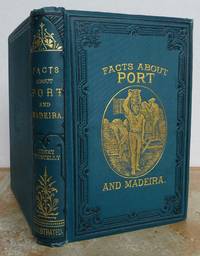
Camera Work. Numbers 48 & 49/50. Edited by Alfred Stieglitz
by [STRAND, Paul & Alfred STIEGLITZ]
- Used
- first
- Condition
- Among the most sought-after issues of Camera Work, these two numbers are complete and in remarkable condition. The plates are c
- Seller
-
Deep River, Connecticut, United States
Payment Methods Accepted
About This Item
N. Y.: Camera Work, 1916-1917. First (only) editions of the final two issues of Alfred Stieglitz's monumental photographic periodical, Camera Work, including, in number 48, the earliest appearance in print of the work of Paul Strand, and in number 50, an issue entirely dedicated to the work of Strand. Limited to 500 copies printed. "The work of Paul Strand was the first photography to excite Stieglitz in a long time. He saw Strand as practicing a truly photographic version of the kind of forceful representation he found in painters like Picasso and Matisse, and he presented Strand's work as a clean break, even changing the time-tested production methods of Camera Work, Strand's photogravures were printed on thicker paper and with different inks." - Roth 101, pp. 42-43. Issue No. 48 includes six photographs by Strand, six halftones by Steiglitz of installations at his gallery 291, and single photographs by Frank Eugene, Arthur Allen Lewis and Francis Bruguiere. Issue No. 49/50 includes eleven original photogravures, all after work by Strand, among them "The White Fence", "Abstraction Porch Shadows", and "Abstraction Bowls". One cannot overestimate the importance of these two issues of Camera Work. As Milton Brown has noted, the appearance of Strand's portrait series herein "was a revelation. Even today they are strikingly powerful images; they were then a new stage in photographic realism. The close-up views and cropping of negatives cut off the subjects from their environment, sometimes even breaking the frame and riveting attention entirely on the physiognomic and psychological revelation of individuality, character, and social condition. . . . Strand's experiments with abstraction and the machine were his unwitting contribution to the history of photography: the portraits, basic to the rest of his development, are the first clear expression of his own aesthetic philosophy." - Milton W. Brown, "The Three Roads", in Paul Strand: Essays on His Life and Work. Edited by Maren Stange. (Aperture, 1990), p. 29. Although not noted in the volumes, these two issues of Camera Work came from the collection of James Johnson Sweeney, at various times the Curator of Painting and Sculpture at MOMA, the second Director of the Guggenheim Museum, and the Director of the Museum of Fine Arts Houston. . Among the most sought-after issues of Camera Work, these two numbers are complete and in remarkable condition. The plates are clean, free of foxing and creasing. The text blocks are clean, bright, and sound, largely unopened. A bit of offsetting from plates to the facing pages as usual, somewhat more pronounced in No. 49/50, but not affecting the images themselves. Wrappers are clean, with only very light wear; the hinges are firm, and there is no creasing or darkening of the spines. Overall both issues are in near fine, and extremely scarce thus. . 2 volumes, small folio, illustrated with 9 and 11 original photogravures respectively, original printed wrappers. Among the most sought-after issues of Camera Work, these two numbers are complete and in remarkable condition. The plates are clean, free of foxing and creasing. The text blocks are clean, bright, and sound, largely unopened. A bit of offsetting from plates to the facing pages as usual, somewhat more pronounced in No. 49/50, but not affecting the images themselves. Wrappers are clean, with only very light wear; the hinges are firm, and there is no creasing or darkening of the spines. Overall both issues are in near fine, and extremely scarce thus. .
Reviews
(Log in or Create an Account first!)
Details
- Bookseller
- James S. Jaffe Rare Books LLC
(US)
- Bookseller's Inventory #
- 23330
- Title
- Camera Work. Numbers 48 & 49/50. Edited by Alfred Stieglitz
- Author
- [STRAND, Paul & Alfred STIEGLITZ]
- Book Condition
- Used - Among the most sought-after issues of Camera Work, these two numbers are complete and in remarkable condition. The plates are c
- Quantity Available
- 1
- Edition
- First (only) editions of the final two issues of Alfred Stiegl
- Publisher
- Camera Work
- Place of Publication
- N. Y.
- Date Published
- 1916-1917
- Note
- May be a multi-volume set and require additional postage.
Terms of Sale
James S. Jaffe Rare Books LLC
Any item may be returned for any reason within seven days of receipt provided prior notification has been given
About the Seller
James S. Jaffe Rare Books LLC
Biblio member since 2009
Deep River, Connecticut
About James S. Jaffe Rare Books LLC
By appointment only.
Glossary
Some terminology that may be used in this description includes:
- Folio
- A folio usually indicates a large book size of 15" in height or larger when used in the context of a book description. Further,...
- Wrappers
- The paper covering on the outside of a paperback. Also see the entry for pictorial wraps, color illustrated coverings for...
- Unopened
- A state in which all or some of the pages of a book have not been separated from the adjacent pages, caused by a traditional...
- Fine
- A book in fine condition exhibits no flaws. A fine condition book closely approaches As New condition, but may lack the...
- New
- A new book is a book previously not circulated to a buyer. Although a new book is typically free of any faults or defects, "new"...

